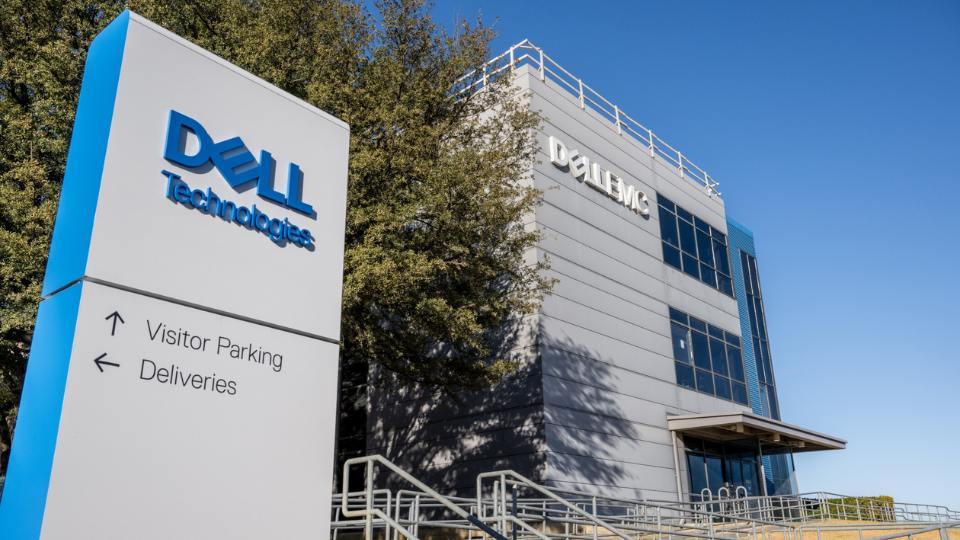The information technology industry has been experiencing significant changes in employment trends since 2020. Significant layoffs have occurred, especially in large technology organizations. Job listings pertaining to the tech trends we investigated fell by 26%, which was a greater decline than the 17% drop in job postings globally. The recent announcement of another wave of layoffs by industry leader Dell Technologies has raised some concerns regarding the future of employment in this industry. This article will take a look at the reasons behind the wave of tech layoffs in 2024 and which firms are affected, and it will dive into Dell’s most recent layoffs.
What Are Dell’s Latest Layoffs?
Dell, a leader in the Tech industry, announced plans in February 2023 to cut around 6,650 jobs, which is about 5% of its global workforce. This was done as part of a broader cost-cutting strategy. 13,000 workers were laid off from Dell, and another round of job cuts was conducted last month. Dell has yet to disclose the number of jobs they eliminated.
The industry has seen a trend in recent years where tech companies are seeking to reduce expenses due to a challenging economic environment characterized by slow demand for personal computers, reduced consumer spending, and macroeconomics. In 2023 alone, more than 191,000 tech workers lost their jobs. Over 93,000 people experienced a similar fate in 2022.
Why So Many Tech Layoffs in 2024?
Several key factors have contributed to the significant layoffs that big IT businesses like Salesforce, Intuit, Amazon, Dell, Microsoft, Google, and IBM have announced. The four main causes of the ongoing wave of layoffs in 2024 are listed below:
-
Post-Pandemic Market Modifications: Tech companies saw a spike in demand for digital services and goods during the COVID-19 era. Many businesses grew quickly and made many of hires to keep up with demand. This has changed; however, as the world enters a post-pandemic era, demand has steadied, forcing businesses to relook at their labor requirements.
-
Macroeconomic Pressures: Tech companies have also been forced to cut expenses, with layoffs being a popular tactic due to the economic downturn. An increase in interest rates and inflation have pushed these businesses to be more frugal.
-
Shift in Business Strategies: The position and focus of the tech sector is shifting from growth-at-all-costs methods to strategies that prioritize profitability and sustainability. Businesses are putting more and more emphasis on project simplification, operational optimization, and resource reallocation to areas or products that yield higher returns.
-
Automation and AI: As technologies are advancing, organizations within this industry are now seeing a change in the kind of jobs that are available. Layoffs result from specific positions becoming redundant as businesses engage more in AI-driven tools and procedures, especially those involving repetitive work.
What Companies Are Having Massive Layoffs?
Dell is not the only tech company that has joined this trend of layoffs. Several other major tech companies have announced significant layoffs in 2024:
-
Amazon: The company is still adjusting its staff; recent layoffs have affected thousands of workers in a number of divisions, including engineering, human resources, and retail operations.
-
Google (Alphabet Inc.): Citing the need to focus on core products and services and streamline operations, the company recently let go of thousands of employees.
-
Meta Platforms (previously Facebook): As it shifts its focus to creating its metaverse plan, it has announced many waves of layoffs, focusing on positions in sales, hiring, and non-core projects.
-
Microsoft: Made large layoffs in its software, hardware, and cloud computing departments.
What Companies Are Laying Off in 2024?
While the companies mentioned above have garnered the most attention, a broader range of firms are also restructuring:
-
Twitter (X Corp.): Beginning in November 2022, Twitter underwent a dramatic metamorphosis into a larger social media corporation, with a number of extreme moves taken with the goal of restructuring the business. This involved the termination of almost 6,000 workers or about 80% of Twitter’s staff. The social media giant continues to cut jobs to streamline operations following its recent acquisition.
-
Salesforce: Announced layoffs affecting hundreds of employees. The action is part of a larger plan to improve operations during a time when the tech sector is experiencing cost-cutting.
-
Spotify: Reduced its workforce due to declining ad revenues and a slowdown in user growth.
-
Zoom: Announced layoffs in response to a decline in remote work and virtual meeting demands post-pandemic.
Predicting Future Shifts in Tech Employment
The tech industry’s trend of layoffs and reorganization points to a number of changes in the future:
Emphasis on Core Competencies: Businesses will probably keep giving priority to their core operations, which will result in layoffs in non-core departments.
Growth in AI and Automation Jobs: While traditional jobs may disappear, opportunities in AI, automation, and machine learning are predicted to increase. This will lead to the acquisition of new skills.
Models of Remote and Hybrid Work: The workforce is changing as a result of the increase of remote and hybrid work. Organizations may see the need to remove office-based employment while adding more contract- or remote-based employment.
Consolidation and Mergers: As businesses strive to maximize resources and expenses, mergers and acquisitions may result in more job losses in roles that overlap.
Conclusion
The tech sector job market is changing dramatically, as seen by Dell’s layoffs and other industry trends. Future tech employment will probably show a concentration on core capabilities, a growth in automation, and more flexible work patterns as organizations negotiate economic uncertainty, technology improvements, and evolving market demands. Recognizing these trends will be essential to foreseeing and adjusting to the changing nature of IT employment.











